EQUIPMENT LIST FOR MANUFACTURE OF STARFIRE POLYMER-TO-CERAMIC COMPOSITES™ (PTCC)
The following is a brief summary of key equipment needed to process Starfire polymer-to-ceramic composites (PTCC). This equipment can enable any organization to manufacture even the most complex shapes and parts with the most basic of composite making skills. As most of the equipment is off-the-shelf, the time to market for any fabricator can be significantly reduced compared to other technology.
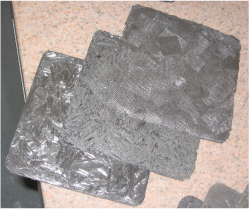

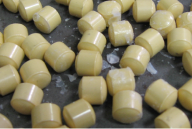 1. Manufacture of Starfire Polymer Slurry
1. Manufacture of Starfire Polymer Slurry
Manufacture of Starfire slurries, or particulate filled resins, is accomplished by tumble mixing powder with Starfire polymers and resins. The selected powder and polymers are added to a low-density polyethylene mixing Carbon along with grinding media and tumbled on a rolling mill. Typical media used is zirconium oxide media filling the mixing container by normally 60%.

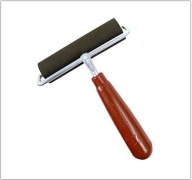 2. Prepregg of Fabric Reinforcement with Starfire Polymer Slurry
2. Prepregg of Fabric Reinforcement with Starfire Polymer Slurry
Prepregg of carbon fiber or ceramic fiber fabric reinforcement is accomplished by either manually rolling slurry into the surfaces of the fabric reinforcement, or through automated prepregg machines using dip tanks and nip rollers to introduce slurry to the fabric.
Manually, slurry is rolled with a hard rubber roller sufficient to transfer slurry into the fabric. A clean table surface is also needed to perform the prepregging.
Automated prepregging equipment is readily available to prepregg in large volume.
3. Specialized Tooling for Compression Molding
As various PTCCs can be fabricated, specialized tooling may be required. This tooling will be part and geometry dependent, and can have internal heating and cooling channels depending on the throughput and demand.
4. Inspection Equipment; Scales, Gages
Depending on the type of PTCC being fabricated, various types of inspection equipment may be required from calipers to mass scales.
- Mass Scales are used for determining mass gains/losses through the process.
- Calipers or micrometers can be used to dimensionally measure physical characteristics of the PTCC.
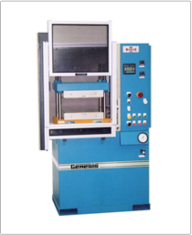 5. Press Curing of Laminate to Molded Green Cured PTCC Blank
5. Press Curing of Laminate to Molded Green Cured PTCC Blank
In order to press cure Starfire polymer systems, heated hydraulic presses are used. A single platen press with caul plates or a multiple-platen press can be used to fabricate multiple laminates simultaneously, or heated compression mold tooled presses can be used. Typical pressures required to press 2-D laminate structures are 250 psi (+/-50), and 650-1,000 psi (+/-100) for compression molding. Typical temperatures required for cure are 300°C (maximum) or less depending on the catalyst and resin selection, with ramp rates of as high as 5°C/min for heating, and 10°C/min for cooling. For compression molding operations, a press which has capability to “push” and “pull” is advantageous, but not required. Better than 0.001″ out of flatness is suggested for high quality composites and thickness variation better than 0.002″ is suggested for any platen press. (http://www.wabashmpi.com/index.htm)
 6. Pyrolysis of Green and Polymer infiltrated PTCC Blanks
6. Pyrolysis of Green and Polymer infiltrated PTCC Blanks
Pyrolysis of Starfire polymer is accomplished in standard ceramic kilns capable of flowing inert gas, such as Nitrogen or Argon, at atmospheric pressure. Programmable heating ramp rates must be 1-3°C/min with a maximum suggested temperature capability of 1,200°C. A high temperature internal can, or retort, is required to maintain inert gas environment, and must have a temperature capability of 1,250°C. Stainless Steel can be used if temperatures 1,000°C (maximum) are to be achieved, and inexpensive high nickel steels such as 309, or 310 are also suitable to achieve 1,200°C maximum pyrolyzing temperatures. A standard kiln volume of 10 ft3 is standard choice for pyrolysis of small volume programs. L&L Kilns supplies all kilns used by Starfire Systems. (http://www.hotkilns.com/index.html)
7. Thermal Oxidizer or Exhaust Handling Equipment
In order to environmentally handle the effluent generated during curing and pyrolysis of some Starfire Systems polymers, a thermal oxidizer may be needed (based on local regulatory requirements). This system removes from any hydrogen, hydrocarbons, water, or other VOCs from the effluent prior to release to the environment.
 8. Polymer Impregnation of PTCC Blanks
8. Polymer Impregnation of PTCC Blanks
Vacuum infiltration of blanks is conducted in vacuum vessels rated to <0.5 torr. A vacuum pump capable to pump at up to 15cfm for a volume 5.5 ft3 is required to maintain vacuum. Each vessel must have a valved tube inlet to introduce polymer, a valved tube exhaust to connect to the pump, and a pressure gage to verify vacuum levels have been achieved. It is also helpful for large vessels to have a valved drain to support polymer removal. (http://www.lacotech.com/)
9. Final Machining
Depending on the final dimensions of the PTCC part, various types of machining operations may be required. In most cases, standard machines and machining centers can be used to machine PTCC materials.
- Abrasive Water jet machining can be used for cutting edges, but a rough edge may remain. Boring holes into and through PTCC materials is not recommended.
- Laser machining can be used for machining PTCC materials.
- Conventional machining can be used for machining PTCC materials, but coolant is typically required which may interact with the individual PTCC composite. Diamond tooling is suggested for all conventional machining.
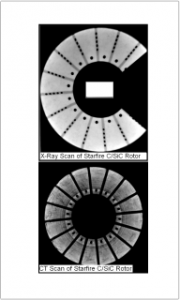 10. Non Destructive Evaluation (NDE)
10. Non Destructive Evaluation (NDE)
Various types of NDE techniques exist for PTCC and are typically similar tools as are found for traditional composite evaluation. Depending on the PTCC geometry, some NDE techniques may be more or less appropriate. Some NDE techniques which have proved successful in evaluating part quality are the following:
- Air Coupled Ultrasonic Testing has been proved to assess part quality non-destructively. (http://www.qmi-inc.com/)
- CT Scan
- X-Ray
